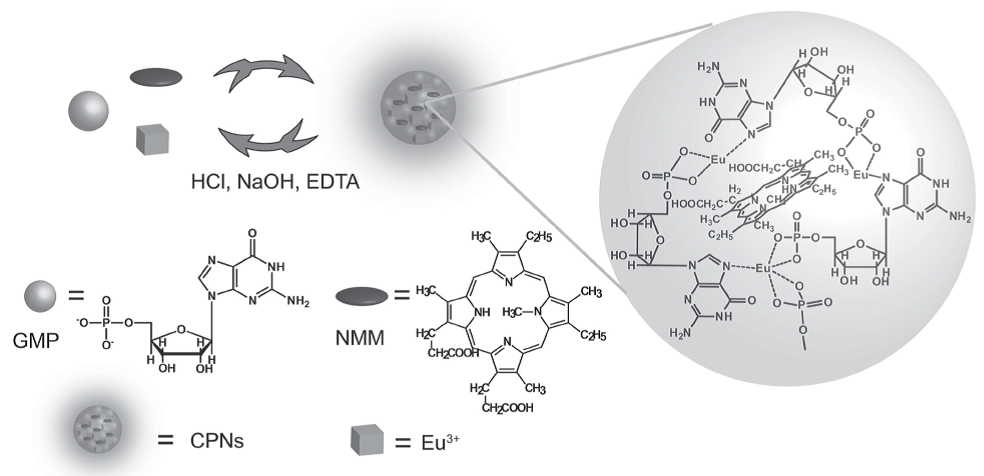任劲松课题组蒲芳同学文章被 Adv. Mater. 接收,文章发表在Adv. Mater. 2014 , 26, 1111–1117上。
We have demonstrated the formation of nanoscale coordination polymers nanoparticles with efficient fluorescence enhancement during the self-assembly process of nucleotides, lanthanide ions, and a dye, by a one-pot synthesis at room temperature. The behavior of the coordination polymer nanoparticles could be described by binary logic gates exhibiting fluorescence emission as the optical output in response to the two- and three-inputs. Various basic logic gates (AND, OR, INHIBIT, NOR, and XNOR), and combinational logic circuits (INH-INH, OR-INH, and XNOR-AND) were constructed successfully. The versatile designs increase the fl exibility and complexity of molecular logic gates. To the best of our knowledge, multiconfi gurable logic operations based on coordination polymer nanoparticles have not been reported to date. Furthermore, the input-dependent encapsulation can produce a controlled release function, namely the holding and releasing of incorporated substances. It also provides a powerful tool, with a large Stokes shift (about 210 nm), for cellular imaging, suggesting the incorporation of the molecular logic gate with a therapeutic agent. Moreover, the system affords advantages including easy design, convenient operation, high stability, and rapid response. The output signals can be observed conveniently with the naked eye in the sunlight or under a UV lamp irradiation. The reversibility of the switch makes the logic gates feasible to realize a system reset. Taken together, the study adds a new dimension to the function of CPNs and the design of logic gates. We expect the material to have a variety of applications in environment-sensitive actuators, drug-delivery, controlled-release systems, and so forth.


